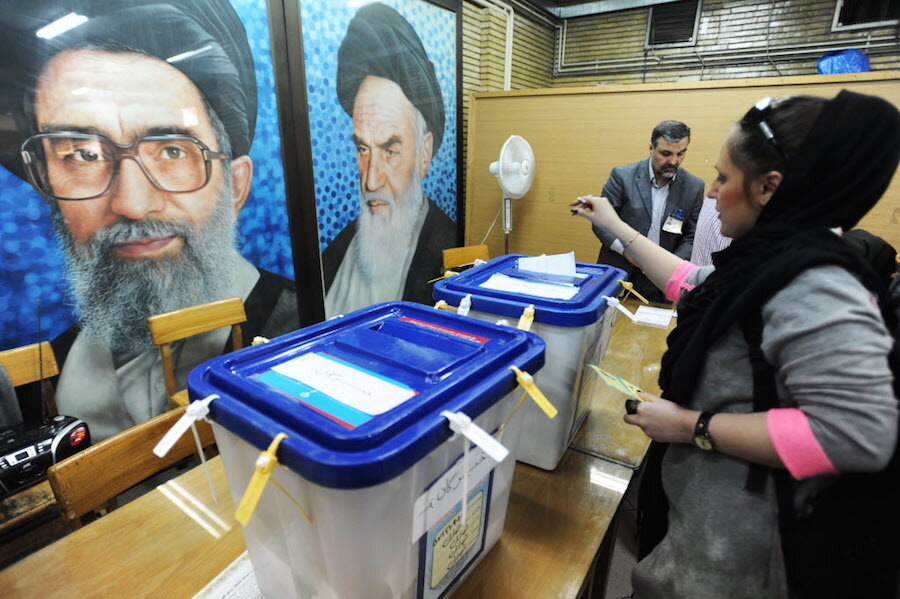Voting extended as Iranians crowd polling stations in crucial election
Loading...
| Tehran, Iran
Iranians took their political battles to the ballot box today, standing in long lines to vote in an election that could either loosen or deepen the hard-line grip on power.
The vote is widely seen as a referendum on President Hassan Rouhani, who reached a nuclear deal with the West that led to the lifting of sanctions last month, but who has been repeatedly thwarted in his bid to ease social restrictions that frustrate Iran’s bulging youth population.
His opponents dominate the current parliament in which 290 seats are up for grabs today, holding out the prospect of change in the final years of Rouhani’s presidency. But many reformist candidates were disqualified, stacking the deck in favor of hard-liners.
Voters are also electing members of the Assembly of Experts, the 88-member clerical body that oversees the work of the supreme leader. Voters from across Iran’s wide political spectrum often carried pre-printed candidate lists, to ensure voting for their political preference amid a bewildering – and often little known – array of candidates.
“We are voting to support the current government … we want [Rouhani’s] reforms to continue,” says Mina, a student who works for the city’s subway system, who voted in a conservative district in east Tehran. She held a bright pink phone and propped her sunglasses on her head as she waited in line outside a mosque-turned-polling station.
“Maybe Mr. Rouhani did not fulfill 100 percent of his promises, but with the [conservative] environment we have, we achieved a lot,” says Mina, who gave only her first name.
The opposing camp could be found just two steps up the line, where Zahra Saboteh had brought her young daughter to the polling station, and was ready to elect hard-line candidates. Both wore black, multi-layered chadors.
“We are all voting because of our passion for the leader, so that foreign countries don’t interfere,” says Mrs. Saboteh, referring to supreme leader Ayatollah Ali Khamenei.
“We’re a wave, and the only silence is when we are not there,” she says. The call to prayer began and she pointed to the minaret above her: “Our hope is with God, that those who deserve it are elected.”
Legitimacy and nationalism
Ayatollah Khamenei cast the first ballot of the day, calling on each who “loves Iran, who loves the Islamic Republic” to rush to vote, in order to “ruin the hope of the enemies.”
Ever since the 1979 Islamic revolution, high turnout has been used by officials as proof of legitimacy. State television cajoled voter turnout with nationalist themes, in keeping with Khamenei’s request that even those who don’t believe in the ruling system, or in him, have a civic duty to vote.
Enthusiasm for voting appeared to cut across party lines, with conservative and more reformist areas both seeing a steady flow of people. Voting was extended two hours because of the crowds. Long after dark, voters snaked around the block at one thronged polling station.
High turnout was largely guaranteed, since the strategies of competing hard-line and moderate factions dovetailed when it came to getting people to the polls.
Not all Iranians are convinced. Mohammad, who gave only his first name, chose not to vote, despite being an active reformist in the late 1990s and joining post-election street protests in 2009 over a disputed presidential election.
“This is the tool they use every time: Warn about hard-liners coming if reformists don’t vote [to increase turnout], but when they are elected they do what they want,” he says, noting that his father, a senior military officer, also won’t vote. “All their heads are in one stable. It’s always a decision between bad and worse.”
But those standing in line said they had a good reason to vote.
For some, it was defiance.
“We’re here to vote for the [supreme] leader, and to prevent saying that ‘All options are on the table,’ ” says Seyed Hossein Fayazabadi, a retired military sergeant. “We’re here so nobody threatens an Iranian.”
For others, the reason was change.
“If the hard-liners go to the parliament again, we know what will happen,” says Mostafa Vahedi, a graphic design student with a flop-over haircut. “Now, the young generation wants the reform, and the change to come.”









